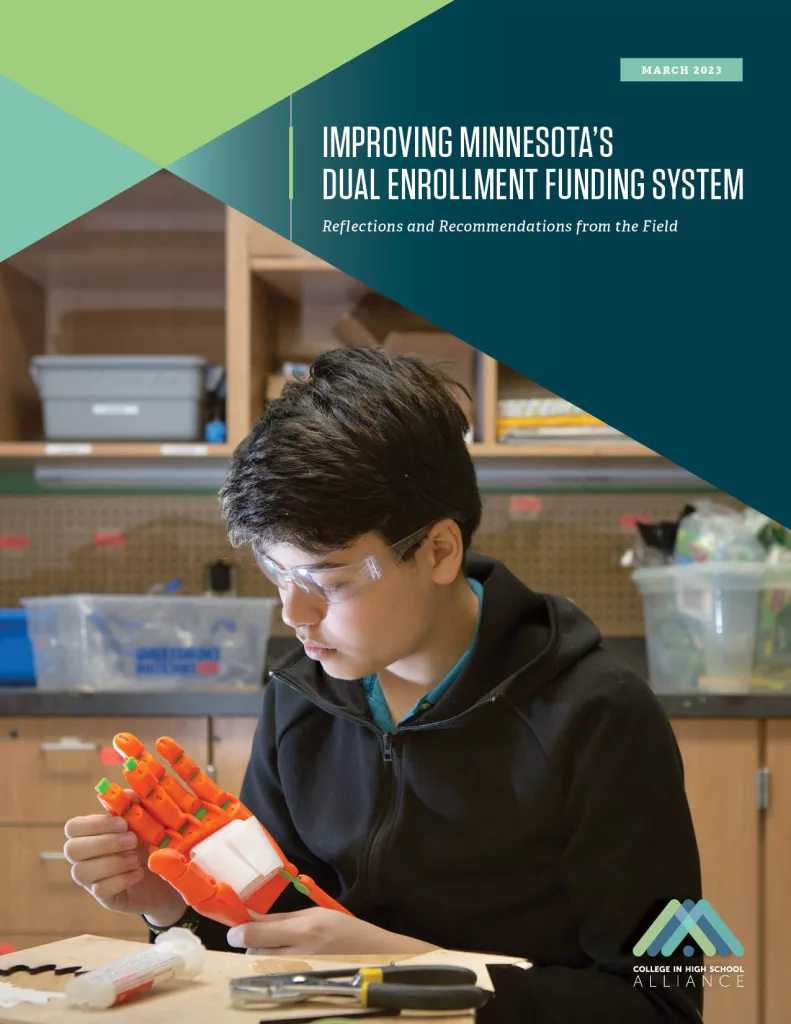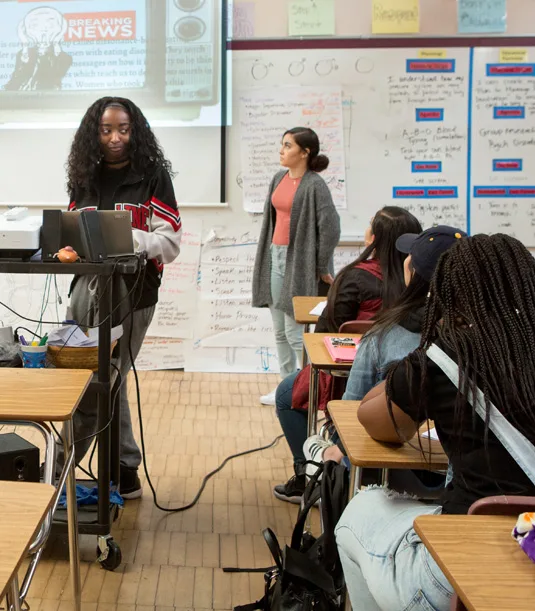Improving Minnesota's Dual Enrollment Funding System: Reflections and Recommendations From the Field
Minnesota has the nation’s oldest state policy architecture supporting college in high school programs like dual enrollment and early college, beginning with the Postsecondary Enrollment Options (PSEO) program that was created in 1985. For over 35 years, Minnesota’s college courses have been free to high school students through PSEO and Concurrent Enrollment programs. These investments have allowed thousands of Minnesota high school students every year to get a jumpstart on college.
However, in recent years, attention has turned towards disparities in access to college in high school programs as a serious concern for policymakers. Particularly given the impacts of the COVID-19 pandemic, policymakers are seeking research-backed interventions that will increase students’ ability to access college and succeed in college. Dual enrollment is one such intervention, with a lengthy research record showing its benefits for many students. However, nationwide and in Minnesota, there are significant access gaps that need to be addressed.
The causes of these access gaps are many, and vary state to state. A number of comprehensive recommendations for improving access to college coursetaking in high school for more students have been advanced by Minnesota state agencies and nonprofits. and it is essential for the state to take a comprehensive look at how to solve access and success challenges for dual enrollment.
One of the key challenges that has been identified is the way that Minnesota funds its dual enrollment programs,and specifically how it funds PSEO. In May 2021, the Minnesota P-20 Education Partnership applied to the College in High School Alliance (CHSA) for technical assistance to explore how the existing funding system for Minnesota’s dual enrollment programs was creating or exacerbating access gaps by unintentionally creating competition between models, and to work with key stakeholders to develop proposals on how to solve identified challenges.
Since late 2021, CHSA has been working with the Minnesota P-20 Education Partnership, and in particular with the Minnesota State Colleges & Universities, the Minnesota Department of Education, Minnesota Office of Higher Education, and the University of Minnesota Twin Cities to conduct a comprehensive series of listening sessions to understand the impact that Minnesota’s dual enrollment funding system is having on program access and success, and to develop a series of principles for reform and specific recommendations to advance to the legislature that would begin to address identified challenges.
This report contains the findings from that effort, as well as policy recommendations for how to address the idenitified challenges.
Access the paper
Improving Minnesota's Dual Enrollment Funding System: Reflections and Recommendations from the Field


